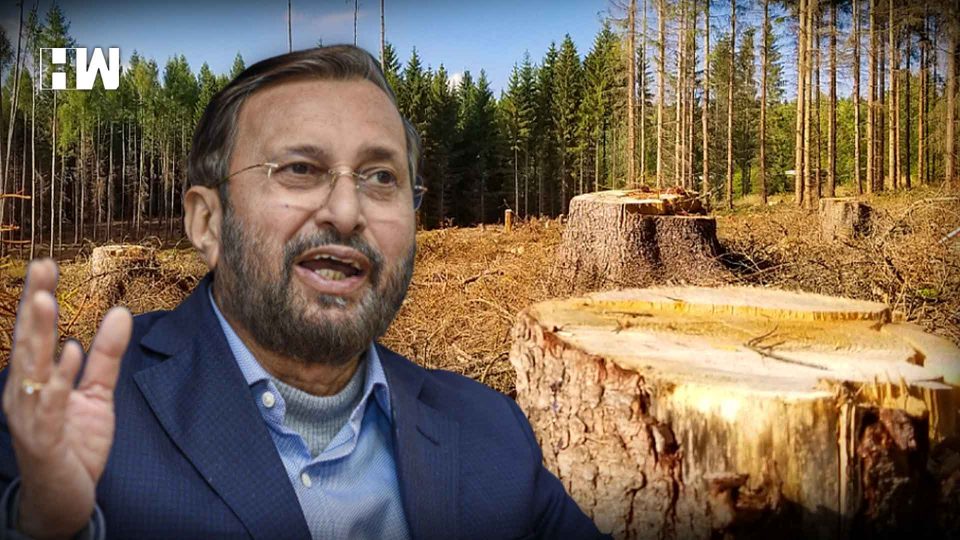To sum it up, the new draft rules somehow seem to weigh in little more on the side of promoters or proponents of the project, while striking down public consultations.
Congress leader Rahul Gandhi on Sunday said the draft Environmental Impact Assessment (EIA) 2020 notification, placed by the government for public feedback, is “disgraceful” and “dangerous”. The Gandhi scion further added that the draft has the potential to undo hard-fought gains won over the years in the battle to protect the environment.
“The EIA 2020 draft is a disaster. It seeks to silence the voice of communities who will be directly impacted by the environmental degradation it unleashes,” Gandhi said. “Not only does it have the potential to reverse many of the hard-fought gains that have been won over the years in the battle to protect our environment, it could potentially unleash widespread environmental destruction and mayhem across India,” Rahul Gandhi said.
The head of the Parliamentary Standing Committee on Science and Technology, Environment, Forests, and Climate Change, Jairam Ramesh has also criticized the draft. Ramesh also stressed that the EIA will undo many key provisions of the EPA,1986 which came after Bhopal Gas Tragedy.
Rahul Gandhi also questioned the exemption provided in the draft and said, “According to our ‘Swachh Bharat’ propagating government, if labelled ‘strategic’, highly polluting industries such as coal mining and other mineral mining will no longer require Environmental Impact Assessment. Neither will highways or railway lines passing through dense forests and other eco-sensitive areas, that will result in the massive hacking down of trees…”
Rahul Gandhi spoke what the environmental activists, students, and biologists have been saying for a while. They say the notification is “anti-people”, “anti-environment” and “pro-industries”.
But why is draft EIA 2020 so controversial?
What is EIA?
EIA, in general, is an important process for evaluating the likely environmental impact or consequences of a particular project. It is used to make a scientific estimate of the likely impacts of such projects, focusing on vital issues such as a mine, irrigation dam, industrial unit, or waste treatment plant. In this process, people’s views are taken into consideration before approving any developmental project or activity. It is mostly used as a decision-making tool to decide whether a project should be approved or not.
Under the Environment (Protection) Act, 1986, the central government has powers to issue the draft notification to take substantial measures for “protecting and improving the quality of the environment”.
The new notification is being brought in order to make the process more transparent and expedient by the implementation of an online system, further delegation, rationalisation and standardisation of the process, says the government. However, the environmentalists say that the draft will further dilute the EIA.
Why Is EIA 2020 Problematic?
The draft has been proposed by the government with the aim of making processes more transparent and expedient. However, the draft proposes the removal of several activities from the comprehension of public consultation.
The notification anticipates two types of approval: i) prior environment clearance (EC) with the approval of expert committees, and ii) environmental permission or provision (EP) without the approval of expert committees.
The prime concern with the draft, however, is that the draft has exempted almost 40 different projects such as clay and sand extraction or digging wells or foundations of buildings, solar thermal power plants and common effluent treatment plants are exempted from prior EC or prior EP.
Several important projects such as B2 projects, irrigation, production of halogens, chemical fertilizers, acids manufacturing, biomedical waste treatment facilities, building construction and area development, elevated roads and flyovers, highways or expressways, which need public consultation, have been exempted in the notification.
The B2 category comprises of projects such as offshore and onshore oil, gas and shale exploration, hydroelectric projects up to 25 MW, irrigation projects between 2,000 and 10,000 hectares of command area, small and medium mineral beneficiation units, small foundries involving furnace units, some categories of re-rolling mills, small and medium cement plants, small clinker grinding units, acids other than phosphoric or ammonia, sulphuric acid, micro, small and medium enterprises (MSMEs) in dye and dye intermediates, bulk drugs, synthetic rubbers, medium-sized paint units, all inland waterway projects, expansion or widening of highways between 25 km and 100 km with defined parameters, aerial ropeways in ecologically sensitive areas, and specified building construction and area development projects.
The disparity by the people is over the fact that the exemption from EIA and public consultation for listed B2 category activity and expansion and modernisation projects will have an ill effect on the environment since there will be no checks from the public end over these projects.
To make it worse, the notice period for the public hearing has been reduced from 30 days to 20 days. This change will make it difficult for people to study the draft EIA since it’s not widely available or given in regional languages.
For project modernisation and expansion, the norms require only those involving more than 25 percent increase requiring EIA, and over 50 percent attracting public consultation. For mining, river valley, and other projects, the validity period of environmental clearance has been increased.
The reporting by the public of violations and non-compliance has been excluded in the EIA 2020 notification. The government will instead take cognizance of reports only from the violator-promoter, government authority, Appraisal Committee, or Regulatory Authority.
To sum it up, the new draft rules somehow seem to weigh in little more on the side of promoters or proponents of the project, while striking down public consultations, accepting flawed and faulty EIA reports resulting from external influences, and ignoring the non-renewable nature of resources.
As an independent media platform, we do not take advertisements from governments and corporate houses. It is you, our readers, who have supported us on our journey to do honest and unbiased journalism. Please contribute, so that we can continue to do the same in future.

